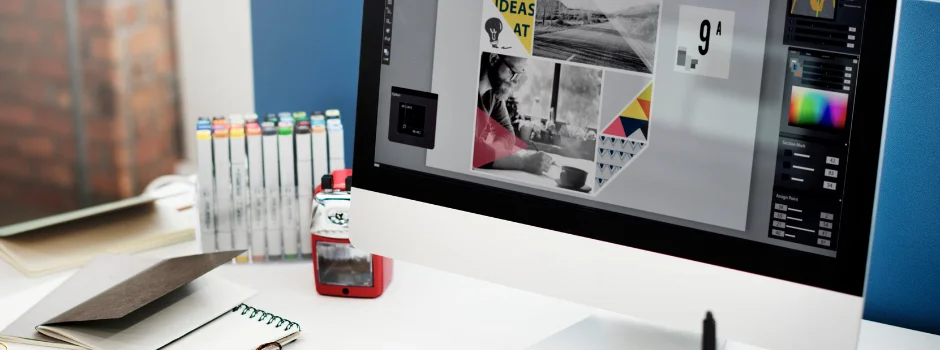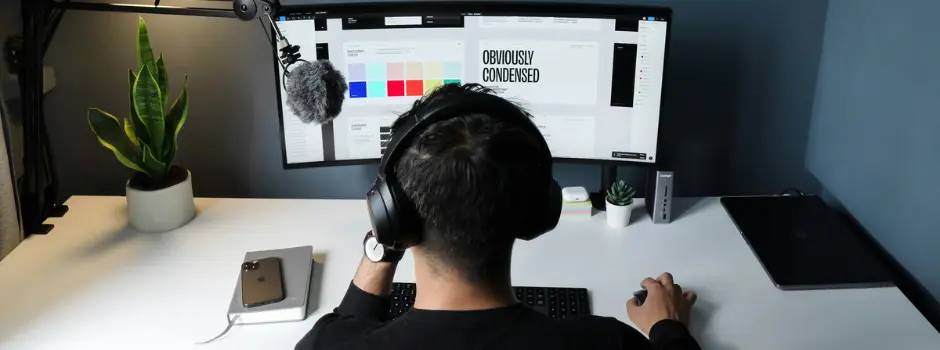
The Power of Framing: Enhancing User Experience Through Psychology
Sep 04, 2025 3 Min Read 3034 Views
(Last Updated)
What if simply changing how you phrase something could dramatically influence the choices people make? In the world of user experience (UX) design, this isn’t just a clever trick; it’s a powerful psychological tool known as framing.
Rooted in behavioral economics, framing affects how people interpret information and make decisions. Whether it’s yogurt labels, pricing strategies, or product trials, subtle shifts in wording or visual presentation can nudge users toward specific behaviors.
This article explores the psychology behind framing, its impact on design decisions, and real-world examples of how designers can use it to create better, more persuasive user experiences.
Table of contents
- What is Framing?
- The Power of Framing in Design
- Here are a few examples to illustrate this concept:
- Yogurt Packaging: Framing Fat Content
- Sneaker Ads: The Framing Effect
- Framing Effect: A Case Study of "The Mobile Spoon"
- Narrow Framing: A Designer's Challenge
- Loss Aversion in User Experience
- The Freemium Approach
- Reframing for Retention
- The Takeaway: Embracing Cognitive Biases
- Books:
- Articles:
- Online Resources:
What is Framing?
Framing biases play a significant role in how we make decisions, often influencing us to base our choices on how information is presented rather than the facts themselves. This concept is a cornerstone of Behavioral Economics, as highlighted by Daniel Kahneman in his influential book, Thinking, Fast and Slow.
A prime example of effective framing in action is the “Save More Tomorrow” program, developed by Richard Thaler and Shlomo Benartzi in 2003. This initiative, which received bipartisan support in Congress, allows employees to automatically increase their retirement savings whenever they get a pay raise.
This program led to significant improvements in savings rates, positively affecting the financial futures of countless workers. The beauty of the program lies in its simplicity; participants commit to saving more in the future, reducing the psychological burden of making immediate changes.
The Power of Framing in Design
Just like small policy changes can drive substantial behavior shifts, minor adjustments in how we present user experiences can greatly influence how users interact with products. Many experts have explored the role of cognitive biases in design, as discussed in articles like “Keep It Simple, Silly: Designing and the Framing Effect” and “Importance of Framing in User Experience”.
Here are a few examples to illustrate this concept:
Yogurt Packaging: Framing Fat Content
Consider a yogurt package that presents its fat content in two different ways:
- Option A: “This yogurt contains 20% fat.”
- Option B: “This yogurt contains 80% fat-free!”
Option B highlights the positive aspect of the yogurt being mostly fat-free, making it appear healthier and more appealing. In contrast, Option A presents the fat content in a less favorable light, which might make consumers more hesitant about their choice.
Sneaker Ads: The Framing Effect
Imagine you’re shopping for a new pair of sneakers and come across two ads for the same model:
- Option 1:
- Image: A photo of the sneakers.
- Price: $100
- Option 2:
- Image: A photo of the sneakers with the original price crossed out at $180.
- Price: $100
Decision:
Which ad makes the sneakers seem like a better deal?
Explanation:
Most people would prefer Option 2. The crossed-out price of $180 creates the impression of a discount, making the sneakers appear more affordable. This demonstrates how the way information is presented can significantly influence our purchasing decisions.
Framing Effect: A Case Study of “The Mobile Spoon”
A company, “The Mobile Spoon,” is marketing a spam blocker app priced at $290. They’re considering two different ways to present the product’s effectiveness:
Decision:
Which framing is more likely to convince users to purchase the app?
Explanation:
Option 2 is likely to be more effective. Although both options convey the same information (the app blocks 96% of spam), the second option frames it in a more positive light. By focusing on the benefit of being spam-free, it appeals to users’ desire for a cleaner inbox.
By highlighting this positive aspect, “The Mobile Spoon” can craft a more compelling and persuasive message. This case study demonstrates the powerful impact of framing on user perceptions and decision-making.
Narrow Framing: A Designer’s Challenge
Narrow framing occurs when individuals make decisions without considering the bigger picture. In finance, this might look like investors focusing solely on individual assets rather than their overall portfolio. Designers can experience similar challenges.
For example, cognitive biases can shape how designers interpret user research data and inform their decisions.
In design, we might accidentally use biases like relative pricing and anchoring to shape how users perceive things, sometimes forgetting the bigger picture. One important concept to keep in mind is loss aversion, which means people tend to focus more on avoiding losses than on gaining something of equal value.
Loss Aversion in User Experience
Loss aversion in UX design often appears in user experience design through strategies like free trials. These trials encourage users to invest time in a product, fostering a sense of ownership that makes them hesitant to walk away once the trial ends. However, many users drop off after the trial because they view the transition to a paid plan as a loss, leading them to opt out if they don’t feel the product justifies the cost.
The Freemium Approach
To reduce user drop-off, many companies offer a freemium model, which provides a basic version of their service for free while charging for extra features. However, entrepreneur Ash Maurya discovered through his tests with a photo-sharing app that a simple pricing plan, like a $49/year subscription, might work better.
While the freemium model brought in more users at first, it ended up keeping fewer of them over time. Users preferred a straightforward, no-fuss approach that matched their expectations.
Reframing for Retention
Designers should prioritize decisions that enhance user retention rather than merely conversion. Shifting this focus can help mitigate biases that lead to not-so-great user experiences.
By considering the entire user journey and the long-term value of a product, designers can create solutions that are not only effective but also user-friendly.
If you want to kickstart your UI/UX journey and learn everything there is to know about UI/UX Design, consider enrolling in HCL GUVI’s UI/UX Design Course, where you will master the most trending design tools, focusing on industry expectations and directing you to Fortune 500 companies.
The Takeaway: Embracing Cognitive Biases
Understanding and leveraging cognitive biases is essential for both user design and designers’ growth. By recognizing how framing influences user decision-making, designers can create experiences that resonate more deeply, fostering better engagement and retention.
As the field of behavioral economics continues to evolve, there’s much to explore about the relationship between design, user psychology, and decision-making. Embracing these insights can lead to more informed design practices and, ultimately, happier, more engaged users.
Books:
- Thinking, Fast and Slow by Daniel Kahneman
- Nudge: Improving Decisions About Health, Wealth, and Happiness by Richard H. Thaler and Cass R. Sunstein
Articles:
- Keep It Simple, Silly: Designing and the Framing Effect by Nick Babich: https://app.uxcel.com/courses/mobile-design/design-for-wearables-456/keep-the-ui-simple-7014
- Importance of Framing in User Experience by Nick Babich: https://uxplanet.org/the-importance-of-framing-in-the-user-experience-8392a061158e
Online Resources:
- Framing Effect by The Decision Lab: https://thedecisionlab.com/biases/framing-effect
- Framing Bias by Corporate Finance Institute: https://corporatefinanceinstitute.com/resources/career-map/sell-side/capital-markets/framing-bias/
- What is Framing Bias? by Interaction Design Foundation: https://uxdesign.cc/the-framing-effect-in-ux-d77df34369ec























Did you enjoy this article?